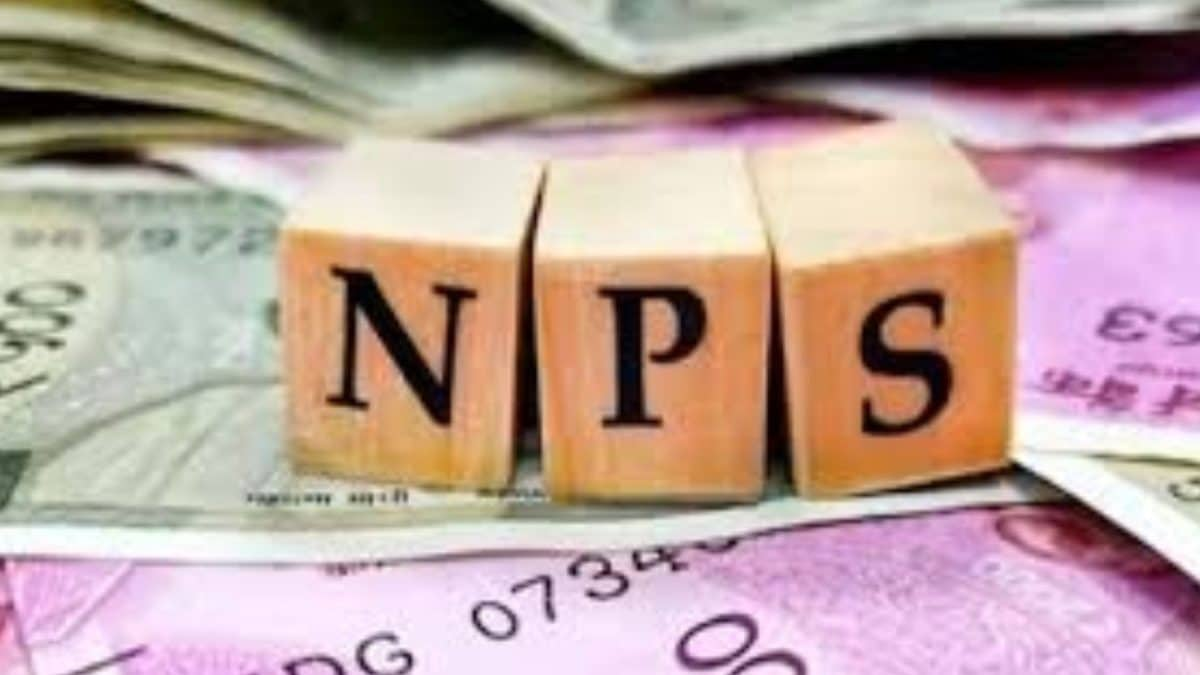Business
US-China soybean trade to resume: Beijing agrees to buy 25 mn tonnes for next 3 years; more nations will buy American soy, says Bessent – The Times of India

Soybean trade between the US and China is set to resume after months of halted purchases. Beijing had refused to purchase American soybean after the two nations got embroiled in tariff tensions.Now, China has agreed to buy 12 million metric tonnes from the United States in the ongoing season till January. However, this is still significantly lower than the 22.5 million tonnes purchased in the previous season.US treasury secretary Scott Bessent confirmed the development on Thursday, saying China has also committed to purchasing 25 million tonnes annually over the next three years under a broader trade agreement. The commitment was reached following talks between US President Donald Trump and Chinese President Xi Jinping in South Korea.The decline in Chinese purchases came as a hit for the US farmers who lost billions in sales. The deal would, hence, come as a return to normalcy with the top US soybean importer. Over the past five crop years, China’s annual purchases averaged 28.8 million tonnes from September to August, Reuters reported.“Our great soybean farmers, who the Chinese used as political pawns – that’s off the table, and they should prosper in the years to come,” Bessent said on Fox Business Network’s Mornings with Maria. He further added that the agreement negotiated in Malaysia over the weekend could be formally signed as early as next week.Alongside China’s commitments, Bessent said other Southeast Asian countries have agreed to buy an additional 19 million tonnes of US soybeans, though he did not specify the timeframe or which countries are involved. According to US Census Bureau data, other Asian importers typically purchase between 8 and 10 million tonnes annually.The commodity markets responded immediately. The most-active soybean contract on the Chicago Board of Trade erased earlier losses and finished 1.2% higher, settling at a 15-month peak of $11.07-3/4 per bushel. Export prices for US soybeans have surged by $20 to $30 per metric tonne this week, driven by expectations of renewed Chinese demand after the Trump–Xi meeting. Roughly 180,000 tonnes, three cargoes, were sold to state trader COFCO just before the summit.Relief among American farmersFarm groups have welcomed the breakthrough after the prolonged trade war slashed soy exports that were worth $24.5 billion last year. US farmers are nearing completion of what is expected to be the fifth-largest soybean harvest on record, but weak Chinese demand and rising costs for fertiliser, seed, labour and machinery have squeezed farm incomes.“This is a meaningful step forward to reestablishing a stable, long-term trading relationship that delivers results for farm families and future generations,” American Soybean Association President and Kentucky farmer Caleb Ragland told Reuters.The breakthrough comes after Trump secured agricultural trade understandings with other Asian economies. American Farm Bureau Federation President Zippy Duvall said, “Expanding markets and restoring purchases by China will provide some certainty for farmers who are struggling just to hold on.”China diversifies soybean purchasesTrump announced on social media after the meeting with Xi that China had authorised purchases of “massive amounts” of soybeans, sorghum and other US farm products. US Agriculture Secretary Brooke Rollins later praised Trump’s comment in a post on X.However, analysts say the arrangement largely resets the trade relationship to previous levels rather than marking an expansion. Even Rogers Pay, director at Beijing-based Trivium China, said the agreement “effectively constituted a return to business as usual”, adding, “It targets a level of trade that has been pretty consistent with the past few years.”Further details will determine whether private Chinese importers return to the US market. Johnny Xiang, founder of Beijing-based AgRadar Consulting, said commercial buyers are waiting to see if soybean tariffs will be lowered from 20% to 10%, or removed entirely.“If the tariff is not completely lifted, commercial buyers will have little incentive to purchase US soybeans,” he told Reuters.China, the world’s largest soybean importer, used its massive demand as leverage during the earlier Trump-era trade war. Facing tariffs of 23%, Chinese buyers shifted towards South American suppliers. Since then, China has intentionally diversified its import sources. Customs data shows that in 2024, only 20% of China’s soybean imports came from the United States, a steep drop from 41% in 2016.
Business
India-Oman CEPA rollout: Trade pact may take effect in three month; Piyush Goyal flags faster execution – The Times of India

India and Oman are aiming to operationalise their recently signed Comprehensive Economic Partnership Agreement (CEPA) within the next three months, Commerce and Industry Minister Piyush Goyal said on Friday, signalling a faster rollout than several past trade pacts, PTI reported.The India–Oman free trade agreement was signed on December 18. Under the CEPA, Oman has offered zero-duty access on more than 98 per cent of its tariff lines, covering 99.38 per cent of India’s exports to the Gulf country. At present, these products attract import duties ranging from 5 per cent to as high as 100 per cent.
“All major labour-intensive sectors will get nil duty,” Goyal said, listing gems and jewellery, textiles, leather, footwear, sports goods, plastics, furniture, agricultural products, engineering goods, pharmaceuticals, medical devices and automobiles as key beneficiaries.On the Indian side, New Delhi has offered tariff concessions on 77.79 per cent of its total tariff lines, or 12,556 product categories, which together account for 94.81 per cent of India’s imports from Oman by value.“The Oman minister and I have discussed that this agreement, we will try to operationalise within three months,” Goyal told reporters, contrasting the timeline with Oman’s earlier trade deal with the US, which was finalised in 2006 but implemented only in 2009.Highlighting investment opportunities, Goyal said sectors such as steel, energy, education and healthcare held strong potential for Indian companies in Oman, particularly resource-linked industries. He pointed to a large green steel project in the pipeline and growing interest in converting energy into green hydrogen or green ammonia for exports.“There is a lot of interest because they have large land banks,” he said, adding that opportunities also exist in marble processing, battery manufacturing, education and healthcare.Goyal said Omani businesses were keen to partner with Indian firms, citing interest from an Omani dairy company in forming a joint venture with Amul. He added that Oman’s sovereign wealth fund and companies had been invited to explore investments in India.
Business
Trump’s ‘Gold Card’ defines wealth as an ‘extraordinary ability.’ Immigration experts say it raises questions

President Donald Trump’s new “Gold Card” visa program uses a novel definition of wealth as a job skill to allow the overseas wealthy to bypass immigration rules and secure citizenship, according to immigration attorneys.
Trump last week announced the start of applications for the “Trump Gold Card,” a new investment visa for foreign nationals. In exchange for $1 million and a $15,000 processing fee, “Gold Card” applicants will get full-time residency in the U.S. in “record time,” according to the program’s website. The website also offers a “Corporate Gold Card,” allowing companies to pay $2 million to secure a “Gold Card” for an employee, and a “Platinum Card,” which offers special tax benefits and may eventually be offered for $5 million.
Only Congress can set immigration policy, meaning the president doesn’t have the power to create or destroy a visa program. So to create the “Gold Card,” Trump is effectively adding a new fee model to two existing programs – known as EB-1 and EB-2 – experts explained to CNBC.
The EB-1 and EB-2 programs are both employment-based programs aimed at attracting award-winning or celebrated professionals. The EB-1 program, nicknamed the “Einstein Visa,” is aimed at those with “extraordinary abilities” – such as scientists, artists, entrepreneurs, athletes and professors who have achieved “sustained international or national acclaim.”
The EB-2 is for researchers, scientists and others whose skills are useful to help solve national problems, like a leading cancer researcher developing new treatments, or a top energy scientist who can help expand the power grid.
White House officials say that the $1 million payment is proof that “Gold Card” holders are successful business people who meet the requirements for exceptional abilities. Anyone with $1 million to spend on a visa is likely to be a productive addition to the American economy and society, they say. Entrepreneurs who started companies overseas can come to the U.S. to expand or start new ventures, creating more jobs. Spending by the “Gold Card” wealthy is also expected to help real estate, the service economy and other industries.
“Why shouldn’t we expedite the people who are willing to step up, to give the United States $1 million,” Commerce Secretary Howard Lutnick told CNBC last week. “Let’s bring in the top of the top, the best. Why should we take people who are below average?”
Immigration attorneys, however, say that replacing highly skilled or celebrated talents with foreign nationals whose sole qualification is writing a $1 million check distorts the intent of the EB-1 and EB-2 programs. Not everyone with $1 million payment is a high-achieving businessperson or entrepreneur, they say. Some may have borrowed the money from friends, family or a lender. Others may have inherited their fortunes but have scant job skills.
“Having $1 million has nothing to do with your value as a person of extraordinary ability,” said Emily Neumann, an immigration attorney with Reddy Neumann Brown PC. “It doesn’t mean you are able to provide value to the United States of America. These categories were supposed to be reserved for people who can foster innovation and contribute to the economy and create jobs. There is no requirement that “Gold Card” holders have a track record of any of those things, just because they happen to have $1 million.”
While “Gold Card” applicants can’t legally skip the current waiting line for EB-1 and EB-2 holders, some attorneys fear the White House will give “Gold Card” applicants priority. Neumann said she has an Indian client who’s a leading expert in artificial intelligence and machine learning and is working on AI applications for doctors to better diagnose patients. He’s approved for the EB-1 but is still waiting on a green card, which could take years.
“They’re using up a limited number of green cards meant for people who have done wonderful things,” she said. “It’s a very different standard.”
Using the EB-1 and EB-2 programs for the “Gold Card” program has created other potential hurdles. While Trump has said he would sell “millions” of “Gold Cards,” and Lutnick said sales could raise $1 trillion in revenue, the two programs are capped at around 28,000 a year. Individual countries are capped at 7% of the total, which is why the the waiting list for E-1 and E-2 applications from India and China already extends for several years.
Immigration attorneys say India and China would be largest sources of demand for “Gold Cards.” Yet because of the waiting lists, few are likely to apply.
“If ‘Gold Card’ holders will be allowed to jump the queue, there will likely be lawsuits from those currently on the wait list,” said Reaz Jafri, an immigration attorney with the international law firm Withers. “And if not, who will want to pay the $1 million and then wait for three years?”
The unanswered questions and legal risks surrounding the “Gold Card” have caused potential buyers to hold off on applying, attorneys say. Dominic Volek, group head of private clients at Henley & Partners, said a number of his clients in Taiwan, Vietnam and Singapore are interested in the “Gold Card” but are waiting for proof that the program works.
Some are also worried about paying the $1 million and then having their visas overturned by a court or a future Democratic administration.
“They want to see the dust settle and see if there are any major legal challenges,” Volek said.
Another concern is the structure of the fee. While some national investment visas are more expensive – such as Singapore’s at nearly $8 million or New Zealand’s at nearly $3 million – they’re structured as investments rather than non-refundable payments. Without an explicit guarantee of a green card, the overseas wealthy are reluctant to pay the $1 million.
“It’s not clear if you make the payment once it’s approved or you provide the payment as evidence, or if it’s kept in escrow during the process,” Jafri said. “They haven’t addressed so many basic questions.”
Proof of funds is proving to be another hurdle for the overseas wealthy. In order to screen for money laundering or criminal activity, the U.S. government typically requires proof that the $1 million fee didn’t come from illegal or illicit sources. Many potential applicants from Asia, Africa and the Middle East are already balking at the demands, since financial documentation is not as thorough.
“The biggest sticking point for a lot of clients is being able to document the source of money,” Jafri said. “In certain parts of the world it’s not so easy to document.”
Business
NPS Gets A Major Overhaul In 2025: What The New Rules Mean For Your Retirement Money?

Last Updated:
In 2025, a sweeping set of reforms by the Pension Fund Regulatory and Development Authority (PFRDA) has been announced to make NPS more attractive, flexible, and investor-friendly.
Non-government subscribers with an NPS corpus of more than Rs 12 lakh can now withdraw up to 80% of their savings as a lump sum, with only 20% mandatorily allocated to an annuity.
The National Pension System (NPS) has been largely used for tax savings. In 2025, a sweeping set of reforms by the Pension Fund Regulatory and Development Authority (PFRDA) has been announced to make NPS more attractive, flexible, and investor-friendly.
Here’s a simple breakdown of what has changed.
Higher lump-sum withdrawals at retirement
One of the most significant changes is the higher cash withdrawal limit. Non-government subscribers with an NPS corpus of more than Rs 12 lakh can now withdraw up to 80% of their savings as a lump sum, with only 20% mandatorily allocated to an annuity. Earlier, 40% had to be annuitised, a provision that often reduced post-retirement returns.
New withdrawal slabs for smaller NPS corpus
PFRDA has introduced a new withdrawal framework based on corpus size, offering greater flexibility to investors with lower balances.
Subscribers with a corpus below Rs 8 lakh can withdraw 100% of the amount as a lump sum. Those with a corpus between Rs 8 lakh and Rs 12 lakh can choose between phased withdrawals using Systematic Unit Redemption (SUR), partial lump-sum withdrawal combined with annuity purchase, or higher lump-sum withdrawal depending on subscriber category.
Systematic Unit Redemption (SUR) introduced
A key structural reform is the introduction of Systematic Unit Redemption, which allows subscribers to withdraw their NPS corpus gradually over a minimum period of six years. This enables a steady post-retirement income stream without locking funds into an annuity.
Investment age limit extended to 85 years
Subscribers can now remain invested in NPS until 85 years of age, up from the earlier limit of 75. This benefits investors who want to delay withdrawals or continue compounding their retirement corpus beyond the traditional retirement age of 60.
More flexibility in partial withdrawals
Before turning 60, NPS subscribers can now make up to four partial withdrawals, compared with three earlier, with a minimum gap of four years. Withdrawals of up to 25% of own contributions are allowed for specified purposes such as education, marriage, home purchase and medical emergencies.
After 60, subscribers who continue investing can make partial withdrawals with a minimum gap of three years between transactions.
Multiple schemes under one NPS account
Non-government subscribers can now hold multiple schemes under a single PRAN, allowing them to diversify across fund managers and investment strategies without opening separate accounts.
100% equity option for long-term investors
From October 2025, private, corporate and self-employed subscribers can invest up to 100% in equities under the Multiple Scheme Framework, up from the earlier cap of 75%. This option is designed for younger investors with long time horizons who can tolerate higher volatility.
Switching between MSF schemes, however, is restricted for the first 15 years or until age 60.
NPS can now invest in gold, REITs and IPOs
NPS equity schemes are now permitted to invest in gold and silver ETFs, REITs, equity AIFs and IPOs. The combined exposure to these assets is capped at 5% of the equity allocation, offering diversification without excessive risk.
Scheme A discontinued: What subscribers must do
Subscribers invested in Scheme A, which focused on alternative assets such as infrastructure, must switch to Scheme C or Scheme E by December 25, 2025. The scheme is being phased out due to low participation and liquidity challenges.
Other investor-friendly changes
Several additional reforms have further improved NPS attractiveness. These include removal of the five-year lock-in for non-government subscribers, permission to pledge NPS corpus to obtain loans (up to 25% of own contributions), and enhanced tax benefits for NPS Vatsalya contributions under Section 80CCD(1B).
Clearer exit and family protection rules
Exit rules have also been streamlined. Subscribers who renounce Indian citizenship can withdraw their entire corpus. In the event of death, nominees or legal heirs receive 100% of the corpus if no annuity has been purchased. Interim relief provisions have also been introduced for cases where a subscriber is legally declared missing.
December 19, 2025, 16:15 IST
Read More
-

 Business6 days ago
Business6 days agoHitting The ‘High Notes’ In Ties: Nepal Set To Lift Ban On Indian Bills Above ₹100
-

 Politics1 week ago
Politics1 week agoTrump launches gold card programme for expedited visas with a $1m price tag
-

 Business1 week ago
Business1 week agoRivian turns to AI, autonomy to woo investors as EV sales stall
-

 Sports1 week ago
Sports1 week agoPolice detain Michigan head football coach Sherrone Moore after firing, salacious details emerge: report
-

 Fashion1 week ago
Fashion1 week agoTommy Hilfiger appoints Sergio Pérez as global menswear ambassador
-

 Sports1 week ago
Sports1 week agoU.S. House passes bill to combat stadium drones
-

 Business1 week ago
Business1 week agoCoca-Cola taps COO Henrique Braun to replace James Quincey as CEO in 2026
-

 Tech1 week ago
Tech1 week agoGoogle DeepMind partners with UK government to deliver AI | Computer Weekly







